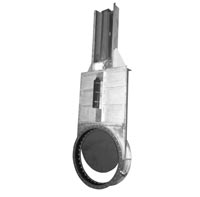As the country begins to rely more on hydraulic fracturing—otherwise known as fracking—in an effort to displace our reliance on oil, a series of concerns related to fracking waste have come to the surface, both within the industry and for the public at large. At the heart of these concerns are two factors:
- The fracking process uses an exorbitant amount of water, compromising fresh water supplies. This is especially troublesome in areas that already experience drought conditions.
- Approximately 30% of the wastewater produced from fracking comes back to the surface of the earth, mingling with local water supplies and risking harm to area drinking water for people, agriculture and wildlife.
 Bearing these issues in mind, new industry has sprung up in response to fund ways to recycle and reuse the wastewater that is being produced. This addresses both the concern over water consumption and the groundwater pollution issue. One of the key practices emerging as a leading methodology in the field is mobile on-site processing using dissolved air floatation (DAF). This eliminates the majority of suspended solids while killing 99% of bacteria to produce reusable water. Butterfly valves and gate valves are key to the operation, allowing the filtration of the contaminated water.
Bearing these issues in mind, new industry has sprung up in response to fund ways to recycle and reuse the wastewater that is being produced. This addresses both the concern over water consumption and the groundwater pollution issue. One of the key practices emerging as a leading methodology in the field is mobile on-site processing using dissolved air floatation (DAF). This eliminates the majority of suspended solids while killing 99% of bacteria to produce reusable water. Butterfly valves and gate valves are key to the operation, allowing the filtration of the contaminated water.
With these conservation tactics on the rise, the fracking industry may be able to reduce negative impacts on the water in the areas in question. Additionally, the use of mobile-processing services saves the company total water consumption costs, waste transport costs and waste disposal costs. It is a promising new avenue on all fronts.

